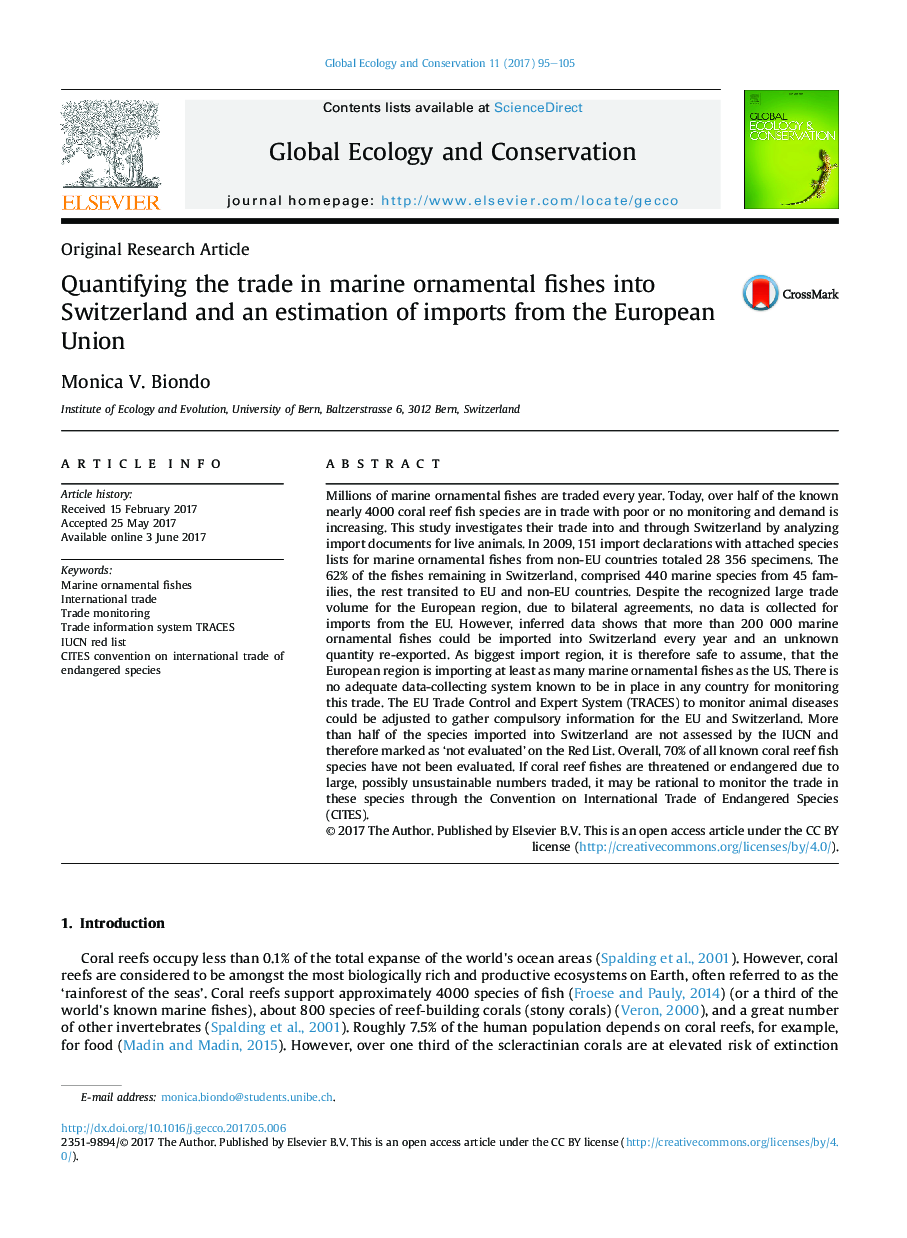| Article ID | Journal | Published Year | Pages | File Type |
|---|---|---|---|---|
| 5742402 | Global Ecology and Conservation | 2017 | 11 Pages |
â¢Quantifying the trade of marine ornamental fishes in the European region.â¢Pointing out the problems with the lack of an adequate monitoring system for this international trade.â¢Scrutinizing the importance of the Convention on International Trade of Endangered Species CITES.â¢The lack of biological and ecological knowledge for many marine ornamental fishes (IUCN Red List evaluation).
Millions of marine ornamental fishes are traded every year. Today, over half of the known nearly 4000 coral reef fish species are in trade with poor or no monitoring and demand is increasing. This study investigates their trade into and through Switzerland by analyzing import documents for live animals. In 2009, 151 import declarations with attached species lists for marine ornamental fishes from non-EU countries totaled 28Â 356 specimens. The 62% of the fishes remaining in Switzerland, comprised 440 marine species from 45 families, the rest transited to EU and non-EU countries. Despite the recognized large trade volume for the European region, due to bilateral agreements, no data is collected for imports from the EU. However, inferred data shows that more than 200Â 000 marine ornamental fishes could be imported into Switzerland every year and an unknown quantity re-exported. As biggest import region, it is therefore safe to assume, that the European region is importing at least as many marine ornamental fishes as the US. There is no adequate data-collecting system known to be in place in any country for monitoring this trade. The EU Trade Control and Expert System (TRACES) to monitor animal diseases could be adjusted to gather compulsory information for the EU and Switzerland. More than half of the species imported into Switzerland are not assessed by the IUCN and therefore marked as 'not evaluated' on the Red List. Overall, 70% of all known coral reef fish species have not been evaluated. If coral reef fishes are threatened or endangered due to large, possibly unsustainable numbers traded, it may be rational to monitor the trade in these species through the Convention on International Trade of Endangered Species (CITES).
